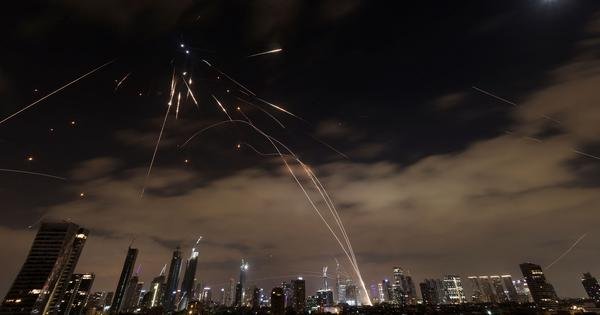Understanding the Israel-Iran Conflict and Missile Defense Systems
Recent Escalations in the Israel-Iran Conflict
Israel recently launched attacks on Iran. They call this Operation Rising Lion. The goal is to stop Iran’s nuclear program and its long-range strike abilities.
Israel says Iran could soon build nine nuclear weapons. Israel finds this unacceptable.
After Israeli strikes on Iranian nuclear sites and the killing of key Iranian figures, Iran fought back. They used ballistic missiles and drones to attack Tel Aviv and Jerusalem. The first wave included about 200 ballistic missiles and 200 drones.
The conflict is worsening. More cities are being targeted. Israel’s missile defense systems, like the Iron Dome, have mostly stopped Iran’s attacks. But the future is uncertain.
Ballistic Missiles and How to Stop Them
Iran has many ballistic missiles, long-range drones, and cruise missiles. Ballistic missiles follow a fixed path. Cruise missiles can change direction while flying.
Iran is about 1,000 km from Israel. So, the current strikes mostly use medium-range ballistic missiles and long-range drones. We don’t know exactly what type of missiles Iran used in the latest strikes. But they have several types, including the Fattah-1 and Emad.
Stopping ballistic missiles is very hard. There is little time between launch and impact. They come down very fast. The longer the missile’s range, the faster and higher it flies.
An incoming missile is a small, fast-moving target. Defenders may have little time to react.

Israel’s Missile Defense and the Iron Dome
Israel has one of the most effective air defense systems in the world. It’s often called the “Iron Dome,” but that’s not entirely accurate.
Israel’s defenses have several layers. Each layer stops threats from different ranges.
Iron Dome is just one of these layers. It’s a short-range, anti-artillery defense system. It stops short-range artillery shells and rockets.
Iron Dome has a network of radar emitters, command and control facilities, and interceptors. The radar detects incoming threats. The command and control elements decide which threats are most pressing. The interceptors destroy the incoming shells or rockets.
Ballistic Defense Systems
The other layers of Israel’s defense system include:
- David’s Sling
- Arrow 2
- Arrow 3 interceptors
These systems stop longer-range ballistic missiles, both within the atmosphere and at very high altitudes.
Spectacular footage shows exoatmospheric interceptions during this latest conflict. This demonstrates Israel’s ability to stop longer-range missiles.
The US military has similar missile defense systems. The US Army has the Patriot PAC-3 and THAAD. The US Navy has the Aegis and the SM-3 and SM-6.
The US deployed Aegis-equipped warships to help Israel defend against missile attacks in 2024. They appear to be preparing to do the same now.
Iran has some air defense systems like the Russian S300. It has limited ballistic missile defense capabilities, but only against shorter-range missiles. Israel has been focusing on weakening Iran’s air defenses. So, it’s unclear how many are still working.
Iran has been developing technology like maneuverable warheads. These are harder to defend against. But it’s not clear if these are operational yet.
Can Missile Defenses Last Forever?
Missile defenses are not infinite. The defender is always limited by the number of interceptors it has.
The attacker is also limited by the number of missiles it has. However, the defender must often use multiple interceptors for each attacking missile. This is in case the first interceptor misses or fails.
The attacker expects some missiles to be lost to interceptors or mechanical failures. They send enough missiles so that at least some will get through the defenses.
When it comes to ballistic missiles, the attacker has the advantage. Ballistic missiles can carry large explosive payloads or even nuclear warheads. So, even a few missiles getting past the defenses can cause significant damage.
What Now?
Israel’s missile defenses are unlikely to stop working completely. But as attacks use up its interceptors, the system may become less effective.
As the conflict continues, it may become a race to see who runs out of weapons first. Will it be Iran’s ballistic missiles and drones, or Israel’s interceptors and anti-air munitions?
It’s hard to say who would win such a race. Some reports suggest Iran has fired about 1,000 ballistic missiles out of an estimated 3,000. But Iran still has a large stockpile. It’s also unclear how fast Iran can make new missiles.
We should hope it doesn’t come to that. Beyond the exchange of missiles, the latest conflict between Israel and Iran risks escalating. If it is not resolved soon, and if the US gets more directly involved, we may see a broader conflict in the Middle East.
This article first appeared on The Conversation.



